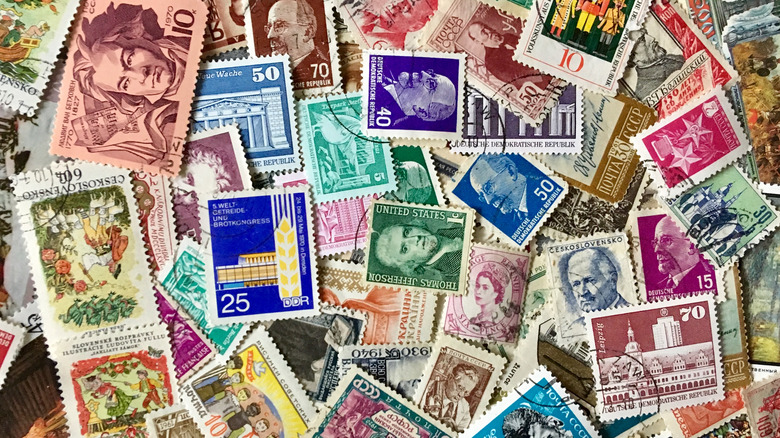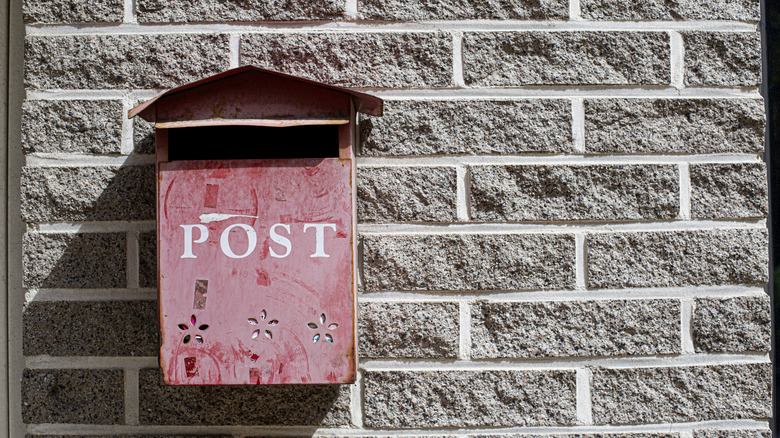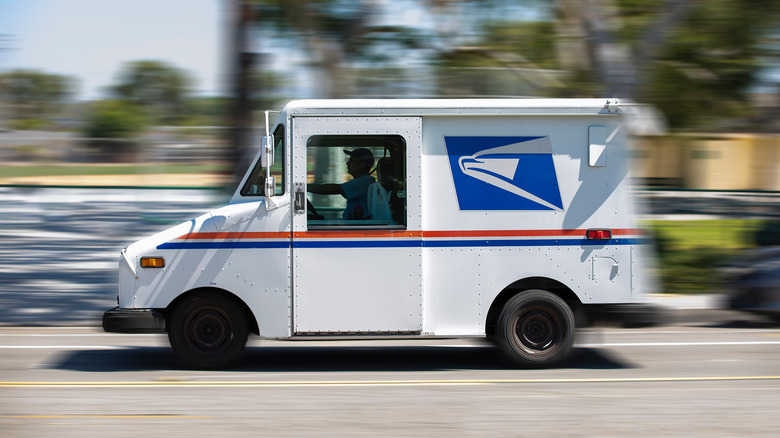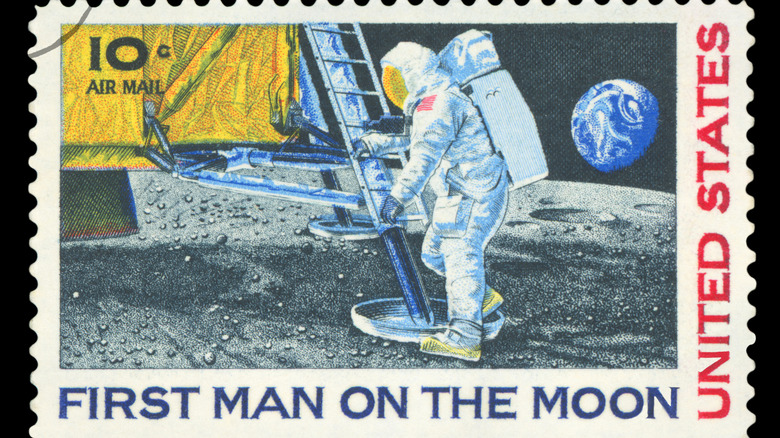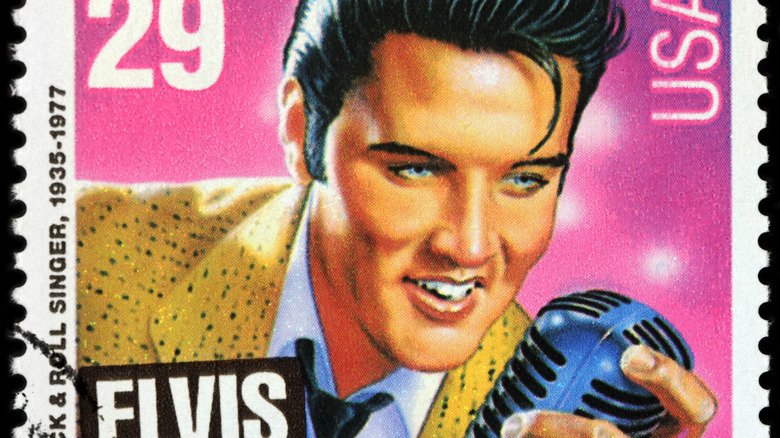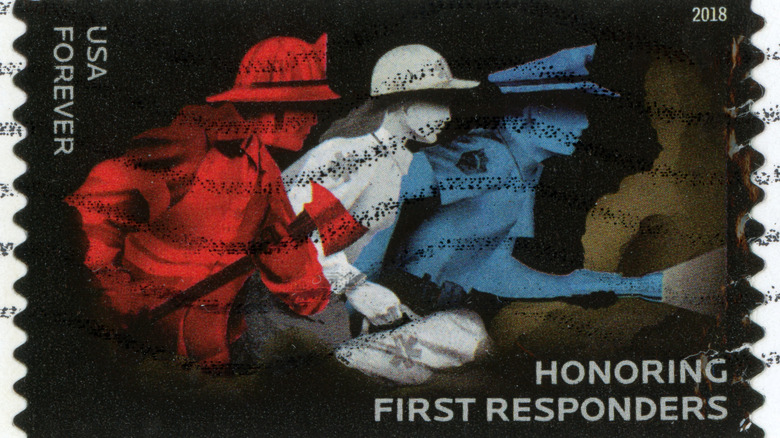Why Were Postage Stamps Invented, And Why Do People Collect Them?
Sending mail may seem like a trivial part of everyday life — just tossing a letter in the mailbox after sticking a stamp on it, or better yet, tossing it in a postage meter machine — but such acts have a rich history. It's said as early as 2400 B.C., Egyptian pharaohs utilized some ancient form of a postal service (via World Atlas). But the Guinness Book of Records recognizes the Sanquhar Post Office in Dumfries, Scotland, which opened in 1712, as the oldest.
The history of post offices in the United Kingdom gets a little fuzzy, because it also said that Charles II established the first post office in 1660, while the first fully-operational mail facility didn't open in London until 1829 (via The History Press). It wasn't until over a decade later that the first postal stamp was issued in the United Kingdom (via United States Postal Service). But let's get a little deeper into the history of that.
History of Stamps in The U.K.
Before stamps became commonplace in England (and internationally), sending a letter was a pretty convoluted ordeal (via United States Postal Service). Letters had to be brought directly to a post office, where the postmaster would hand write the postage paid — or that needed to be paid — on the envelope. Rates were based on the distance a letter needed to be sent and how many sheets of paper it had (rather than weight, as it is today). Even stranger, postage could be paid in advance by the sender, collected from the party receiving the letter, or the sender and receiver could split the cost 50/50, with half paid up front and half paid upon delivery. Imagine a sort of collect call-type situation, but with mail.
Things really began cooking in 1837, when English teacher and social reformer Sir Rowland Hill suggested uniform postage rates across Great Britain (per United States Postal Service). Whether envelopes came preprinted to denote how much postage was paid or with adhesive labels (aka stamps), he believed there was a way to make the postal department's work less chaotic. Not long after, in May 1840, postage stamps went on sale. And not long after that, those Yankees across the pond followed suit ... two years later, to be precise.
History of Stamps in The U.S.
With Benjamin Franklin declared as its first postmaster general, the United States Postal Service as it is known today was founded in 1775 (via History), but the first stamp was not invented until 1842. A private New York City postal carrier, Alexander M. Greig, created the first adhesive postage stamps in May of that year, and not long after, he was bought out by the larger and federal Post Office Department, which continued the use of his stamps.
Although stamps were being used, it was not for another five years in 1845 that the United States Congress authorized postage stamps and another two years after that in 1847 when the first general-use stamps were sold in New York City. From then on, prepaid mailing systems in the United States have only become more advanced. In 1853, the first print-stamped envelopes were created, and what's known today as a "postal card" (a postcard with prepaid postage on it issued by the United States Postal Service) was first sold in 1873. The real fun came in 1893 when the first commemorative stamp was sold, kicking off the age-old hobby of collecting stamps, otherwise known as philately (via Britannica).
Stamp Collecting
The first ever commemorative stamp issued in the United States was released in honor of the 1893 World Columbian Exposition in Chicago (via United States Postal Service). Not only were these stamps — that were double the size of regular stamps — a sought-after collectors' item, their introduction to the market sparked the passion in a long line of philatelists.
Notable stamp collectors throughout history include singer John Lennon, author Ayn Rand, aviator Amelia Earhart, astronaut and first American woman in space Sally Ride, and United States President Franklin D. Roosevelt (via Linn's Stamp News). Some of them were even immortalized with stamps in their honor, like Sally Ride and John Lennon. But all of these stamp collectors shared one common goal — the goal of collecting the rarest and most interesting stamps out there.
Commemorative Stamps
One hundred years after the first commemorative stamp's release in 1893, the to-date best-selling United States commemorative stamp was released: the 29-cent 1993 Elvis Presley stamp (via United States Postal Service). Other sought-after commemorative stamps include those that honor history, like the Women Cryptologists of World War II set or ones that honor great artists, like Marvin Gaye.
According to History, there have also been unfortunate stamp releases now sought after for their controversial appeal — like Richard Nixon stamps — or because they were simply never released (with good reason). In observance of World War II's 50th anniversary, the United States Postal Service released commemorative stamps that many felt were in poor taste — they depicted a mushroom cloud, similar to the one caused by the atomic bomb that devastated Hiroshima and Nagasaki during the war. The stamp read "atomic bombs hasten war's end, August 1945," and people were enraged (via History). The president at the time, Bill Clinton, intervened, and instead, the controversial image was replaced by an image of Harry Truman announcing Japan's surrender in 1945. Some prototypes of the original mushroom cloud design were released, however, and are still hunted to this day by the most avid of philatelists.
The Future of Mail
Since those very first days of American mail in 1775 and the first American stamp in 1842 (via United States Postal Service), the United States Postal Service has grown to boast over 40,000 post offices nationwide (via History). More than 200 billion pieces of mail get delivered each year to addresses throughout the continental United States, Puerto Rico, Guam, the American Virgin Islands, and American Samoa.
Following the release of many commemorative stamps since 1893, other special stamps have been released, like the first adhesive stamp in 1974 and the first improved water-based adhesive stamp in 1989 (per United States Postal Service). We mentioned how easy it is to take for granted the simple process of mail delivery, but what we really don't appreciate enough is the ability to stick our stamps on envelopes without separate adhesive, and that didn't become universal until 2002. The United States Postal Service didn't even issue the first Forever Stamp — a non-expiring stamp combatting stamp price changes — until 2007. So who knows what's in store for the future of mail, considering there was a time when putting stamps on letters was groundbreaking.
